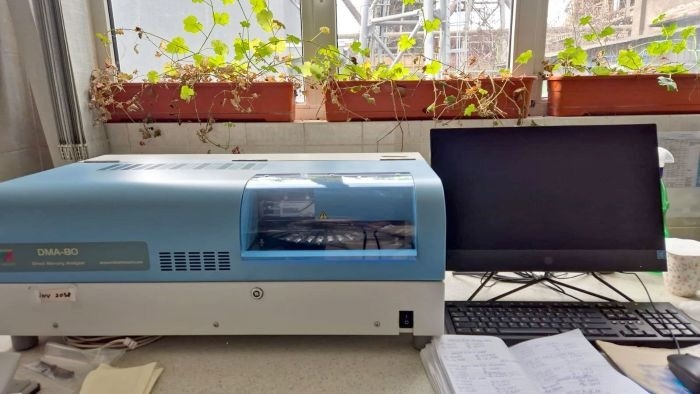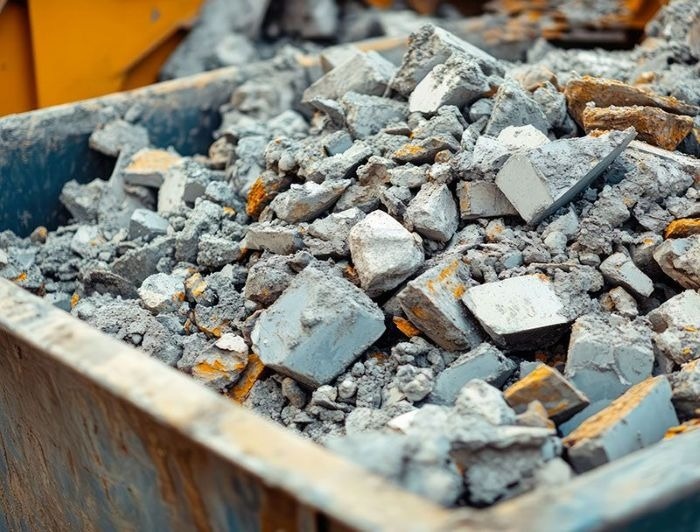Heidelberg Materials Romania, part of the global Heidelberg Materials Group, is a leader in the Romanian cement industry.
At its Fieni Cement Plant, the laboratory team ensures top-tier regulatory compliance and environmental protection, using advanced technologies to support sustainability targets and strict quality control processes.

Image Credit: Milestone™ Srl
Mercury (Hg) emissions are tightly regulated at both local and EU levels, particularly under the Industrial Emissions Directive (IED).
To comply, the lab must monitor mercury concentrations in various incoming materials and carry out routine in-process checks to ensure environmental control throughout cement production.
The Challenge
The team at Heidelberg Materials Romania needed an efficient and accurate solution for monitoring mercury levels in both raw feedstock and alternative fuels used in cement production.
The company is required to comply with an air emission limit of 0.05 mg/Nm3 for mercury and must verify these values annually through third-party laboratory testing. Depending on the material, mercury concentrations can range from 0.01 ppm to 10 ppm.
Previously, mercury testing was entirely outsourced to external labs, creating delays that hindered real-time decision-making and made it difficult to adjust to variations in material mercury content during production.
While the plant relies on continuous emissions monitoring systems (EMS), material-based mercury testing remains essential for environmental risk management.
Heidelberg’s in-house lab needed a faster, more reliable method for routine screening of fuels (such as RDF, coal, oil sludge, and waste), raw materials (e.g., limestone), and process-related samples—ideally without requiring extensive chemical preparation or specialized technical personnel.
Mercury testing is performed not only on incoming fuels and raw materials but also at key stages during the process, helping the plant proactively manage environmental performance. Our in-house capability provided by the DMA-80 plays a crucial preventive role for us.
John David, Chemist at Heidelberg
Implementing the DMA-80
After evaluating several technologies, Heidelberg selected the DMA-80 Direct Mercury Analyzer from Milestone™ Srl. The decision was driven by key features, including:
- Direct analysis of both solids and liquids, with no digestion or chemical pretreatment required
- High precision and repeatability, even at trace Hg concentrations
- Full compliance with EPA Method 7473 (already in use by the lab), based on thermal decomposition, amalgamation, and atomic absorption spectrometry (AAS)
- Low maintenance needs and robust design
- Automated workflows and intuitive software, allowing quick adoption without the need for extensive retraining
Milestone’s local representative, Ronexprim, provided full support during installation, method setup, and user training. Now fully integrated into daily operations, the DMA-80 is used to analyze both incoming materials and in-process samples, helping the plant proactively manage mercury levels.

Image Credit: Milestone™ Srl
Conclusions
Since its implementation, Heidelberg’s lab has realized several key improvements:
- Significantly reduced analysis time, leading to faster decisions and greater productivity
- Improved accuracy and repeatability, supporting both internal quality assurance and external compliance
- No chemical reagents or digestion steps, reducing operational costs and enhancing lab safety
- Minimal maintenance, decreasing downtime, and increasing instrument availability
- Ongoing technical support from Ronexprim, ensuring reliable and stable performance
Although mercury emissions are continuously monitored via EMS and verified annually by a third-party lab, the in-house DMA-80 system provides a vital early-warning capability.
It enables Heidelberg to identify and address elevated mercury levels before they affect emissions, supporting the company’s commitment to environmental protection, sustainability, and production quality.
Read the complete story
Acknowledgments
Produced from materials originally authored by Milestone™ Srl.

This information has been sourced, reviewed, and adapted from materials provided by Milestone™ Srl.
For more information on this source, please visit Milestone™ Srl.